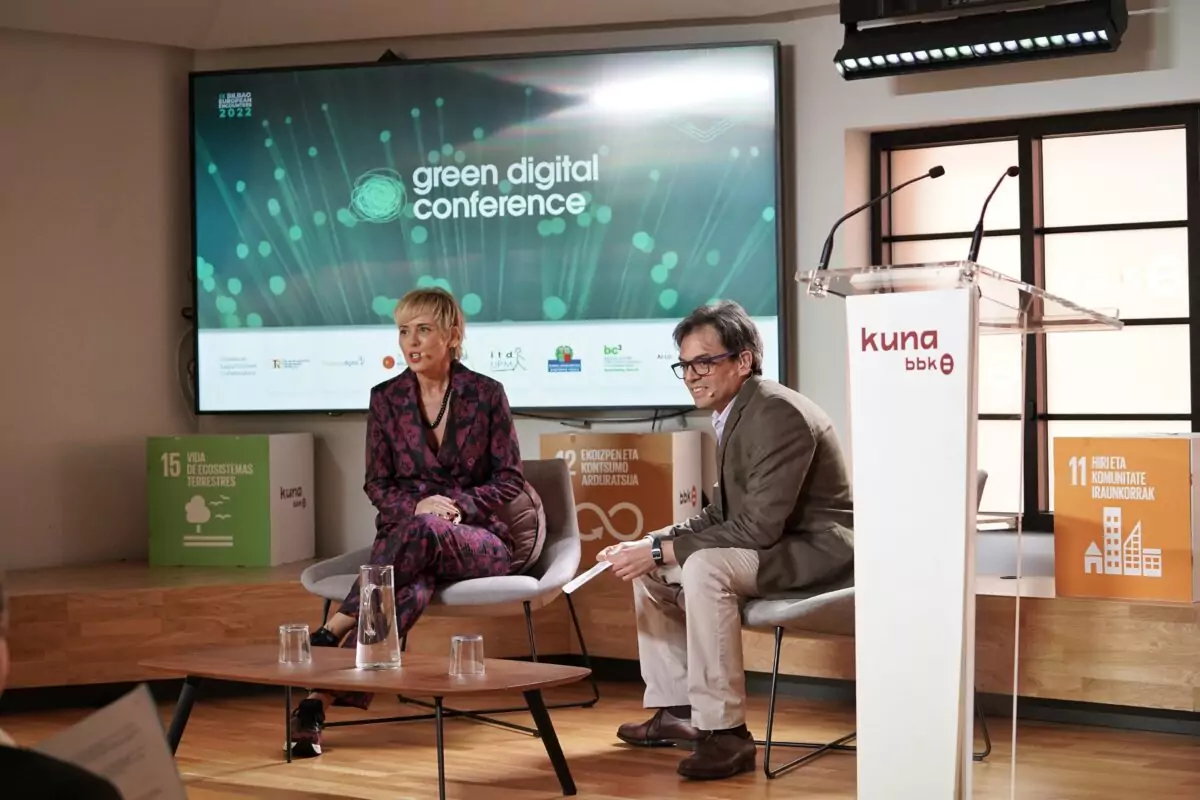
10 key points to prevent the emissions of digital technologies in the UE from reaching 40% in 2030
It is calculated that by 2030 digital technologies will account for 40% of greenhouse gas emissions and 10% of all electricity consumption in the EU. Concepts as abstract as ‘the cloud’ often alienate this reality from the collective imagination. Therefore, undertaking the digital transformation in which the world in immersed, requires including an environmental perspective in order to ensure compliance of the international sustainability goals.
The ‘Green Digital Conference’, was based on this need, which was the centre of the international debate held in Bilbao on 17 and 18 November. As a result of this event, by way of conclusion, the ‘Bilbao Green Digital Declaration’ came to be, in an attempt to recognise that aligning the digital and green transitions is urgent and necessary. In fact, a specific term is being used when referring to it: twin transition.
“This digitisation is material, all too material”, the document concludes. The event was organised by the Bilbao City Council, BBK, Globernance and the Chair in AI & Democracy. The Declaration proposes a 10-point plan for digital green transformation. This plan has emerged from the talks held by national and international experts in this IX edition of the Bilbao European Encounters held in Bilbao on 17 and 18 November 2022. “Digital development aligned with the Sustainable Development Goals and Agenda 2030 is possible if we take into consideration the social, material and energy implications. We still have time”, states the Declaration.
These conclusions which are now reflected in the 10-point plan, aim at “acting in accordance with digital minimalism: prior assessment of the relevance and need to develop digitisation systems in certain contexts and applications, avoiding the use of banal technology”. They also mention incorporating eco-design criteria in the development and implementation of digital systems, including environmental impact evaluation and measurement processes. “It is necessary to measure the impacts in order to transform the systems”, it points out.
The Green Digital Conference also addressed the field of green algorithms, something which has to be promoted from its development according to the 10-point plan, based on “data science and Artificial Intelligence to improve the energy efficiency of processes and activities”. According to the Declaration, this vision should also be included in energetically sustainable and efficient hardware and software development, through the use of these green algorithms. It also mentions the ‘circular digital economy’ aimed at “promoting the reuse of electronic materials and devices and a culture of repair”. In the energy field, the 10-point plan call for prioritising renewable energies in the digitisation processes.
Finally, it puts people in the centre and underscores the need to “protect individuals, populations, species and vulnerable environments which may be negatively affected by the extraction of raw materials for digitisation and for producing energy”. A fair and equitable access to the benefits and burdens of digitisation processes is another one of the claims stated in the document, which concludes by inviting to promote “sustainable digital literacy among the population promoting good digital consumer habits, especially among young people, deeply aware of sustainability and of protecting the environment”.
The full declaration can be viewed on this link.
